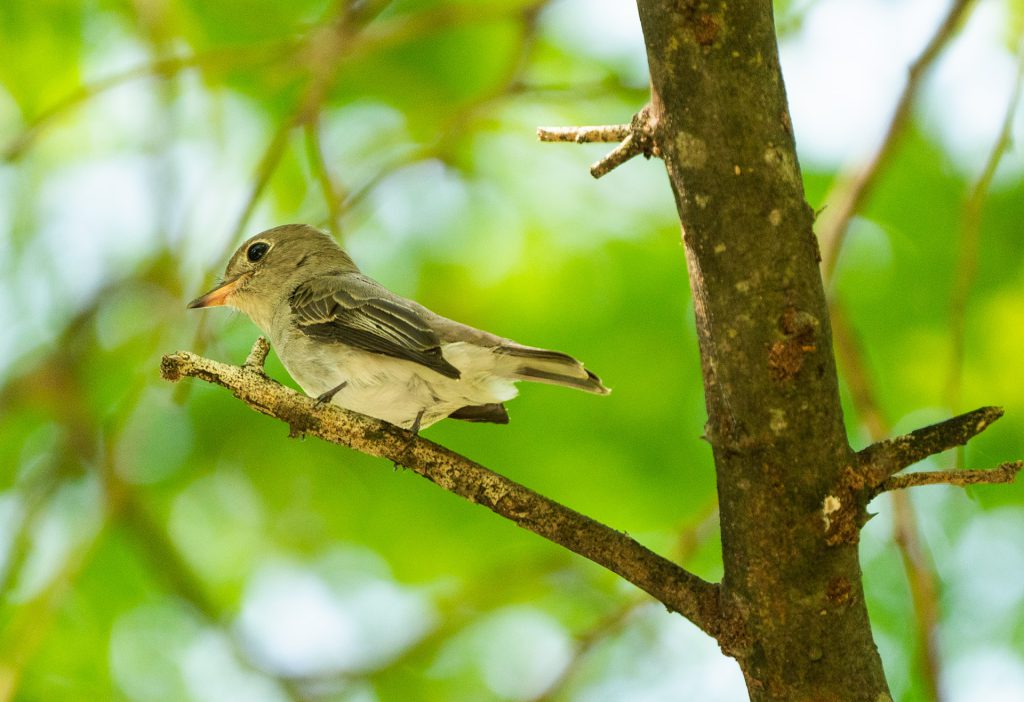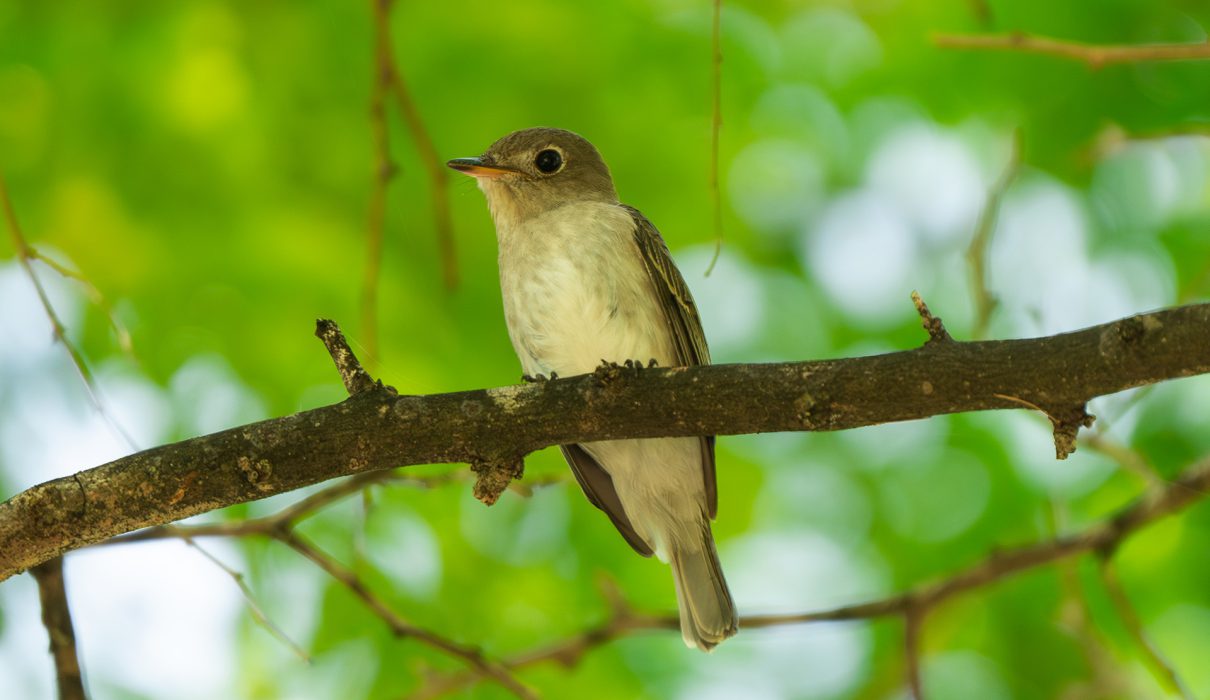The Maldivian shores come alive with the arrival of a special guest towards the end of the year — the Asian Brown Flycatcher (Muscicapa dauurica). This migratory bird, not native to the Maldives, graces the islands roughly during November and December, adding a touch of biodiversity to the region.

Scientific Insight:
- Scientific Name: Muscicapa dauurica
- Malay Name: Sambar-Kusam Biasa
- Chinese Name: 北灰鹟
- Range: Eastern Russia, northern China, Japan to Korea, wintering in the Indian subcontinent, southern China, and Southeast Asia.
- Taxonomy: Polytypic. Subspecies include dauurica, poonensis, siamensis.
- Local Subspecies: dauurica
- Size: 12.5-13.5 cm
Identification: This nondescript flycatcher showcases brown upperparts, whitish underparts variably suffused with pale grey-brown on the upper breast, a whitish eyering, and pale greyish fringes to wing-coverts and tertials.
Habitat and Behavior:
- Habitat: Forests, parks, gardens, wooded areas, and mangroves.
- Behavior/Ecology: A very common migrant, this bird exhibits fascinating behavior during its stay. It is known for its simple melodic song during courtship.
Local Status and Conservation:
- Local Status: Very common migrant
- Conservation Status: Least Concern (BirdLife International 2019)
Migration Patterns: The fall migration of the Asian Brown Flycatcher in the Maldives builds up throughout September, reaching a peak in mid-October. Many individuals remain throughout the winter, creating a seasonal spectacle for bird enthusiasts.
Observation Locations: Prime locations for observing this migratory marvel include Central Catchment Forest, Venus Drive, Lower Pierce Boardwalk, Bukit Timah Nature Reserve, Dairy Farm Nature Park, Bukit Batok Nature Park, Bidadari, Singapore Botanic Gardens, Pasir Ris Park, Sungei Buloh, Tuas South, and other suitable habitats.
Featured Articles and Resources:
- Identification Guides: FLY101: Identifying Little Brown Jobs of the genus Muscicapa in Singapore (ID Articles)
- Birding Starter Pack: What bird is this, and why? (Birding Starter Pack)
- In-Depth Articles: FLY201: An overview of brown flycatchers in Muscicapidae (ID Articles)
External Links and References:
- Conservation Status: IUCN Red List Page
- Sound Recordings: xeno-canto Link
- Wikipedia Entry: Wikipedia Link
- eBird Species Page: eBird (Asian Brown Flycatcher)
Physical Description: This species is 13 cm (5.1 in) long, including the cocked tail. It is similar in shape to the larger spotted flycatcher but relatively longer-tailed. The dark bill is relatively large and broad-based. The adult has grey-brown upperparts, which become greyer as the plumage ages, and whitish underparts with brown-tinged flanks. Young birds have scaly brown upperparts, head, and breast.
Geographical Variation: Although usually treated as monotypic, populations in the Indian subcontinent and the Andaman Islands should be regarded as a separate subspecies, poonensis. This subspecies is paler and browner above, with a deeper bill, mostly pale lower mandible, a more mottled throat, breast, and flanks (in fresh plumage), less contrastingly white “spectacles” and throat, and perhaps a more rounded wing.
Behavior: Asian Brown Flycatcher is a common bird found in open woodland and cultivated areas. It nests in a hole in a tree, laying four eggs which are incubated by the female. The male Asian Brown Flycatcher sings a simple melodic song during courtship.
Vagrancy: The Asian Brown Flycatcher is an extremely rare vagrant to Western Europe. Records have come from Britain, Denmark, and Sweden, and there are unproven claims from Ireland, Faeroe, and Norway.


